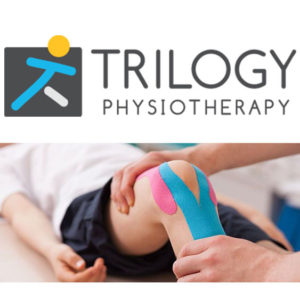How to ‘Save your Neck’, after all, it holds your head up!
Posted onHow to ‘Save your Neck’, after all, it holds your head up!
Written by Jim Marinow a Registered Massage Therapist, Fascial Stretch Therapist and Tui Na Practitioner at Trilogy Physiotherapy.
We all tend to slump a bit at our desk, we look down into our lap to view the screen on our handheld device, and our chin pitches forward a little when we drive….Yikes!
When your chin moves forward and your shoulders ‘round’ inward, a number of unpleasant things happen at your neck and shoulders.
For every 15 degrees that our head comes forward (from upright), there is roughly 15lbs of pressure exerted on the cervical spine (your neck). So, at 45 degrees of ‘forward pitch’, (which is roughly where your head is when looking down at your handheld device), you have the equivalent of a 4-year-old child sitting on top of your head.
Most of us do this for over 1,000 hours a year!
This can lead to a complex of problems known as Upper Crossed Syndrome: The muscles of the upper back become over-active and strained, while the chest muscles become shortened and tight which eventually leads to headaches, neck pain, shoulder pain, and postural disorders.
The fix: The best position for sitting at your desk is movement! Standing work stations are great but don’t try standing all day. The magic to diminishing the ill effects your desk is to keep changing your position.
For example:
Sit for a while and try to be mindful of your posture, as soon as you notice yourself slouching, move to a standing position,
If you take a phone call, walk around while you are talking.
Go back to sitting for a while, then return to standing with one foot elevated on a couple of books (be nicer than that to your books and use a low box).
Getting regular manual therapy to help the process along is also a great idea to helping keep your neck and shoulders healthy. The hands-on release of Trigger Points (Knots) in your neck and shoulders, enables those muscles to move through their intended Ranges of Motion, have better circulation and allow your body to feel relaxed while maintaining good posture.
Our muscles instinctively move away from pain and discomfort, so if a muscle is tight, sore, and ‘talking’ (or screaming) at you, your body will try to move into a position that avoids discomfort. Massage therapy removes the discomfort and allows your muscles to maintain great posture without struggling.
In my practice, I provide manual therapy to release tight and overexerted muscles. I also activate muscles that have been weakened by underuse and I teach my patients simple and effective exercises that can be done in the office or at home to help offset the postural problems which are associated with sitting for long periods of time.
Learn more about our coaching and physiotherapy team and services, or contact us to schedule an appointment.

